In the line of fire
In modern Western society there has been a strong prohibition on women being part of the armed forces. This has not always been the case, as seen in the legendary Amazons, or Boudiccea, Queen of the Brigantes who led her troops into battle against the Romans.
It was not unknown for women who wished to enlist to masquerade as men, such as Dr James Barry (1795-1865) who was only discovered to be a woman on 'his' death after a long career as an army surgeon.
Trained nursing services by women, pioneered by Florence Nightingale during the Crimean War in 1853-56, have had a long and honourable record in the front line and at home.
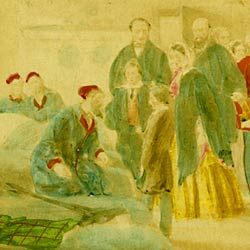
Detail from a painting showing Miss Nightingale with a group of visitors to the hospital at Scutari during the Crimean War (MS 95/2)
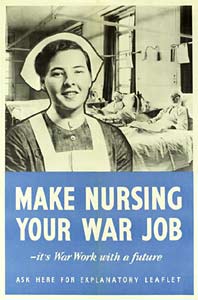
Propaganda poster from World War II (WWP 9/8/1)
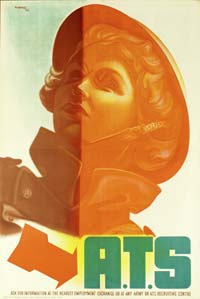
ATS recruitment poster (WWP 7/5)
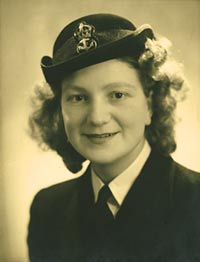
Nancy Pulley née Sylvia Bate, serving in the WRNS, worked at Bletchley Park (Private collection)
During the Second World War women were conscripted into the uniformed services, although in the United Kingdom, unlike the USSR, women in uniform did not serve on the front-line but played supporting roles behind the lines, freeing servicemen for active duty.
Today women in many armed forces serve in a wider range of positions than ever before, but that they should serve in combat roles is still a matter of controversy. They have certainly played an active part in civil wars and armed uprisings as guerrilla and resistance fighters, notably in Africa and South America.
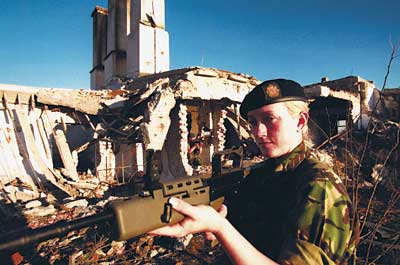
Modern woman soldier in the British Army (By permission of the Ministry of Defence)
Her's is a post requiring the courage of a Cardigan, the tact and diplomacy of a Palmerston, the endurance of a Howard, the cheerful philanthropy of a Mrs Fry or a Miss Neave; Miss Nightingale fills that post..
Hon. & Rev. Sydney Godolphin Osborne, Scutari and its hospitals (London, 1855:27)
We were trained in Surgical and Medical wards and I spent most of my two and half years in the Operating Theatre. It was a case of working non-stop day and night without a break…I think one of the hardest duties was dealing with relatives of the dead who came to identify their loved ones in the mortuary.
Mrs Elsie Wright, Voluntary Aid Detachment, during the Second World War
Crowds would gather and gaze in fascination as the girls went about their duties alongside the men… In 1942 the 93 Searchlight Regiment went into action manned entirely by ATS… the girls carried out all duties, including sentry duty, armed with a pickaxe handle…
Margaret Waldie, served as a gun layer in the ATS during the Second World War
We were under the same regulations as the men, no relaxing of rules because we were the fairer sex!… The girls found it difficult to flick parcels into the correct gaping open mouths of the mail bags which hung from huge frames and they spent sometime getting it right, but as usual, in the end they were more dextrous than the men.
Dorothy Pope served in the ATS in the Army Post Office in Nottingham during the Second World War
The pressures of our work, the need for accuracy, speed and the watch keeping sometimes took its toll. We were told every minute lost was a life lost. That is why we had four and half days off every month.
Nancy Pulley (Sylvia Bate) served in the WRNS at Bletchley Park during the Second World War
Next: Women in modern wars